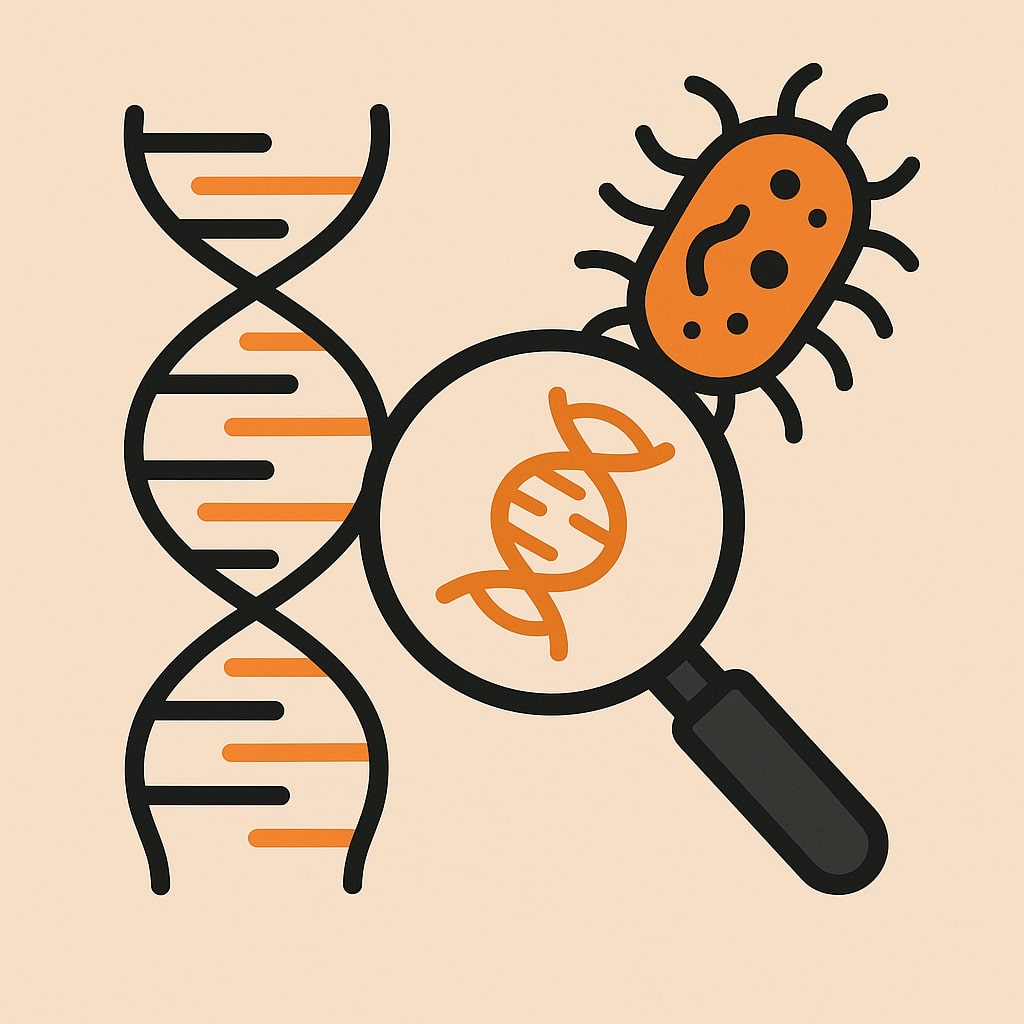16S rRNA Sequencing
16S rRNA sequencing is a scientific method used to study bacteria. It looks at a specific gene found in all bacteria called the 16S ribosomal RNA (rRNA) gene. Because this gene is highly conserved but also has unique regions, scientists can use it to identify and compare different types of bacteria. This makes it a valuable tool in microbiome research, health, and nutrition studies.

What is 16S rRNA?
The 16S rRNA gene is part of the ribosome, which is the cell’s protein factory. Every bacterium has this gene, and while much of it is similar across species, certain sections vary. These differences act like a genetic “fingerprint” that can tell one bacterium apart from another.
How Does 16S rRNA Sequencing Work?
The process involves several steps:
- Sample collection: A sample is taken, such as from the gut, mouth, or skin.
- DNA extraction: Bacterial DNA is isolated from the sample.
- Amplification: The 16S rRNA gene is copied many times using PCR (polymerase chain reaction).
- Sequencing: Machines read the DNA sequence of the 16S rRNA gene.
- Analysis: The sequences are compared with databases to identify which bacteria are present.
Why is 16S rRNA Sequencing Important?
16S rRNA sequencing is important because it helps scientists and healthcare professionals understand the bacterial communities that live in and on the human body. This is especially useful in nutrition and gut health research. It can reveal how bacteria affect digestion, immunity, and overall wellbeing.
Applications in Health and Nutrition
- Gut microbiome studies: Understanding how bacteria influence digestion and nutrient absorption.
- Disease research: Identifying bacterial imbalances in your gut, linked with conditions such as obesity, diabetes, or inflammatory bowel disease.
- Personalised nutrition: Supporting tailored diet advice based on an individual’s gut microbiome.
Strengths and Limitations
While 16S rRNA sequencing is powerful, it has both strengths and weaknesses:
- Strengths: Cost-effective, widely used, and can identify a wide range of bacteria.
- Limitations: It usually cannot detect viruses or fungi, and it may not distinguish very closely related bacteria with complete accuracy.
Nutritionist's Corner: Final Thoughts
“16S rRNA sequencing gives us a window into the hidden world of bacteria in our bodies. By learning which microbes live in the gut, we can better understand digestion, immunity, and overall health. While it isn’t the full picture, it’s an essential tool in modern nutrition and personalised wellness.”
— Yusra Serdaroglu Aydin, MSc RD
Author

Yusra Serdaroglu Aydin, MSc RD
Head of Nutrition and Registered Dietitian
Yusra is a registered dietitian with a multidisciplinary background in nutrition, food engineering, and culinary arts. During her education, her curio...